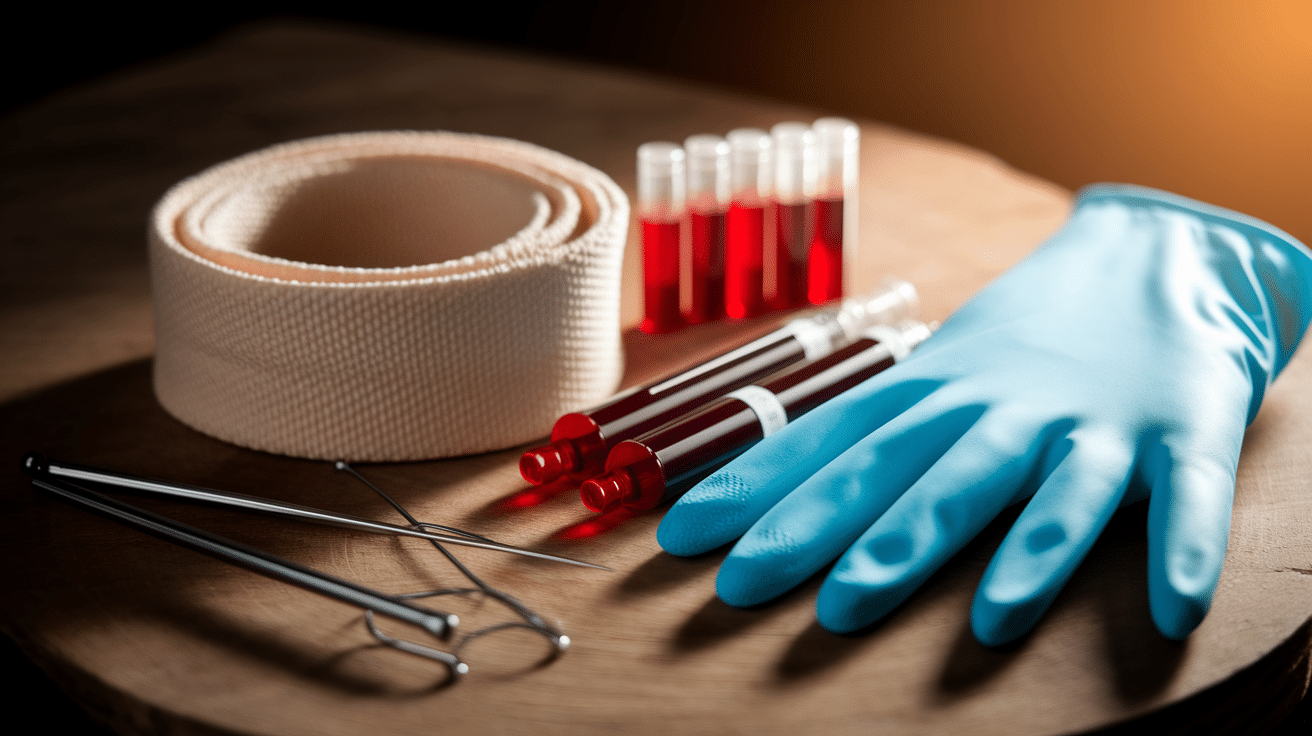Thinking about a quick and rewarding career in healthcare? Becoming a phlebotomist might be the perfect choice.
Phlebotomists are the people who draw blood for tests, donations, and more. The best part? You don’t need years of school to get started.
Even if you’re switching careers or just starting out, phlebotomy offers a fast way into the medical field.
With training options that fit your schedule, you can be job-ready in just a few months or even weeks.
Let’s look at how long it takes to become a phlebotomist and what the career looks like from start to finish.
How Long does it Take to Become a Phlebotomist?
If you are looking to become a phlebotomist as quickly as possible, there are accelerated programs available that can significantly shorten the typical timeline.
Most phlebotomy programs can be completed in just 4 to 6 weeks. These programs are full-time and focus on providing essential knowledge and practical skills in a condensed timeframe.
Even in a fast-track program, you’ll need to complete the required clinical hours, which are typically around 100-120 hours of supervised practice.
The faster pace can sometimes make these hours more intensive, but they are necessary for building real-world skills.
Steps to Becoming Certified

Follow these steps to become certified: complete a phlebotomy training program, pass the certification exam, apply for jobs, and maintain certification through continuing education.
Step 1: Enroll in a Phlebotomy Training Program
Start by researching accredited phlebotomy programs offered at community colleges, vocational schools, or online platforms.
-
Select a Program: Choose a program that provides both classroom instruction and hands-on clinical training. Ensure it meets state and national certification requirements.
-
Program Duration: Programs typically last between 4 to 6 months, but accelerated options are available that may take as little as 4-6 weeks.
Step 2: Complete the Phlebotomy Training
In this phase, you will study human anatomy, blood collection techniques, patient safety, infection control, and medical terminology.
- Clinical Experience: You will gain hands-on practice by drawing blood under the supervision of experienced professionals. This clinical training is essential for developing the necessary skills.
- Complete Required Hours: Most programs require a minimum number of clinical hours (usually around 100-120 hours) to ensure competency in blood collection techniques.
Step 3: Take the Certification Exam
After completing your training, select a certification organization. The most common ones include the American Society for Clinical Pathology (ASCP) and National Healthcareer Association (NHA).
- Prepare for the Exam: The certification exam typically includes multiple-choice questions covering topics such as blood collection techniques, anatomy, patient safety, and infection control.
- Pass the Exam: Once you feel prepared, schedule and pass the exam. Some organizations may also have a practical component where you demonstrate your blood-drawing abilities.
Step 4: Apply for Jobs
-
Create Your Resume: After obtaining your certification, update your resume to include your phlebotomy certification, training program details, and clinical experience.
-
Start Job Search: Many employers prefer or require certified phlebotomists. Look for job opportunities in hospitals, blood donation centers, medical laboratories, and clinics.
Step 5: Maintain Your Certification
Some certification bodies require phlebotomists to earn continuing education credits to maintain certification.
Be aware of when your certification expires and if recertification is required (usually every 2-4 years).
Choosing the Right Phlebotomy Program
Choosing the Right Phlebotomy Program involves considering factors such as duration, cost, and the certification or degree you aim to achieve:
| School Type | Length | Leads To | Cost |
|---|---|---|---|
| Online Program | 4 to 8 weeks | Certificate | $650 to $1300 |
| Certificate from Community College | 6 to 12 weeks | Certificate | $600 to $2000 |
| Associate Degree in Related Field | 2 years | Certificate & Associate Degree | $10,000 to $40,000 |
Phlebotomy Certification Timeline

The Phlebotomy Certification Timeline varies based on program type and clinical hours, influencing the overall duration to certification:
Factors Affecting the Timeline
Several factors can influence how long it takes to complete a phlebotomy certification:
Type of Program
-
Accelerated Programs: These programs are intensive and can be completed in as little as 4 to 6 weeks. They are designed for those who want to become certified quickly, often requiring a full-time commitment.
-
Standard Programs: These programs typically last 4 to 6 months and may include more in-depth training and longer clinical experience hours.
Course Delivery Format
-
Online Programs: While some programs offer online learning options, they still require hands-on clinical training, which may add to the overall duration.
-
In-Person Programs: These often involve more structured schedules, which may lead to a longer but more immersive experience.
Clinical Experience
-
Clinical Hour Requirements: The required number of clinical hours varies by program and certification board, affecting the overall course duration.
-
Hands-On Practice: Some programs require more hands-on practice to ensure competency in safely drawing blood.
Average Duration:
On average, it takes 3 to 6 months to complete a phlebotomy program and obtain certification. This timeline includes both classroom training and hands-on clinical experience, followed by the certification exam.
Frequently Asked Questions
Is Online Phlebotomy Certification a Good Option?
Yes, online programs are a flexible option for completing coursework remotely. However, they still require in-person clinical hours for hands-on training.
Do I Need a Degree to Become a Phlebotomist?
No, most phlebotomists only need a certification, which can be obtained through a training program. Some may choose to pursue an associate degree for advanced career opportunities.
Is Certification Required to Work as a Phlebotomist?
Certification is not required in all states, but most employers prefer or require certified phlebotomists due to the increased credibility and training it offers.
How do I Prepare for the Phlebotomy Certification Exam?
Prepare by reviewing your training materials, focusing on topics like blood collection techniques, human anatomy, patient safety, and infection control. Some programs also provide study guides and practice tests.
Conclusion
Becoming a certified phlebotomist typically takes around 3 to 6 months, depending on the program you choose.
Whether you opt for an online, in-person, or hybrid course, each has its own set of advantages, costs, and timelines.
While accelerated programs can help you become certified more quickly, they require a full-time commitment and may involve intensive training.
Regardless of the path you choose, certification is highly valued by employers, providing better job prospects and higher earning potential.
By carefully considering factors like program type, duration, and cost, you can select the phlebotomy training option that best suits your career goals and timeline.












